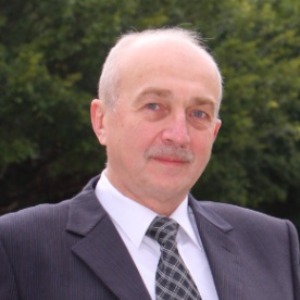Homogeneous Catalysis:
In chemistry, homogeneous catalysis is catalysis in a resolution by a soluble catalyst. Homogeneous catalysis leads to reactions where the catalyst is in the identical phase as the reactants, mostly in solution. In contrast, heterogeneous catalysis defines processes where the catalysts and substrate are in different phases, typically solid-gas, approximately. The term is used exclusively to define solutions and implies catalysis by organometallic compounds. Homogeneous catalysis is an established technology that remains to result. An explanatory major application is the production of acetic acid. Enzymes are examples of homogeneous catalysts.
Examples of Homogeneous Catalysts:
Acid catalysis, organometallic catalysis, and enzymatic catalysis are specimens of homogeneous catalysis. Most often, homogeneous catalysis involves the introduction of an aqueous phase catalyst into an aqueous solution of reactants.
Molecular Catalysis:
Molecular catalysis is not a well-distinct field but it always leads to the associate application of molecular chemistry, Mainly molecular recognition, and guest binding, approaching chemical action.The Division of Molecular Catalysis addresses scientific challenges in the area of organometallic chemistry varying from the molecular fundamentals to the development of novel reaction-engineering theories. The research topics are arranged with the principles of Green Chemistry and include in particular the use of CO2 as a chemical building block and the selective transformation of bio-based feedstocks, as well as the utilization of advanced reaction media such as ionic liquids or supercritical fluids. The original project plans are based on a rational mechanical understanding, whereby computational chemistry plays a major role in the analysis and for imminent catalyst design.

Stanislaw Dzwigaj
Sorbonne University, France
Dai Yeun Jeong
Asia Climate Change Education Center, Korea, Republic of
Sergey Suchkov
N.D. Zelinskii Institute for Organic Chemistry of the Russian Academy of Sciences, Russian Federation
Enrico Paris
CREA-IT & DIAEE, Italy
Rabeharitsara Andry Tahina
GPCI-ESPA Antananarivo University, Madagascar
Jiri Dedecek
J Heyrovsky Institute of Physical Chemistry , Czech Republic
Uday Som
Research and Development Engineer, Japan
Vladimir G Chigrinov
Hong Kong University of Science and Technology, Russian Federation



Title : Distant binuclear vanadium V(II) cationic sites in zeolites and their reactivity
Jiri Dedecek, J Heyrovsky Institute of Physical Chemistry , Czech Republic
Title : Advanced nanostructures for carbon neutrality and sustainable H₂ energy
Tokeer Ahmad, Jamia Millia Islamia, India
Title : Personalized and Precision Medicine (PPM) as a unique healthcare model via bi-odesign, bio- and chemical engineering, translational applications, and upgraded business modeling to secure the human healthcare and biosafety
Sergey Suchkov, N.D. Zelinskii Institute for Organic Chemistry of the Russian Academy of Sciences, Russian Federation
Title : Antibody-proteases as a generation of unique biomarkers, biocatalysts, potential targets and translational tools towards nanodesign-driven biochemical engineering and precision medical practice
Sergey Suchkov, N.D. Zelinskii Institute for Organic Chemistry of the Russian Academy of Sciences, Russian Federation
Title : Dimethyl ether synthesis from syngas over Cu-Zn/Al2O3 catalysts prepared using the Sol-Gel method
Uday Som, Research and Development Engineer, Japan
Title : Influence of various catalysts on H₂ enhancement and CO2 capture during syngas upgrading
Enrico Paris, CREA-IT & DIAEE, Italy
Title : Photoaligned azodye nanolayers : New nanotechnology for liquid crystal devices
Vladimir G Chigrinov, Hong Kong University of Science and Technology, Russian Federation
Title : Application of vanadium, tantalum and chromium single-site zeolite catalysts in catalysis
Stanislaw Dzwigaj, Sorbonne University, France
Title : Advances in heterogeneous catalysis for green conversion of propene to aldehydes and alcohols
Ram Sambhar Shukla, CSIR-Central Salt and Marine Chemicals Research Institute (CSMCRI), India
Title : Oxidation of methane to methanol over pairs of transition metal ions stabilized in the zeolite matrices
Jiri Dedecek, J Heyrovsky Institute of Physical Chemistry , Czech Republic